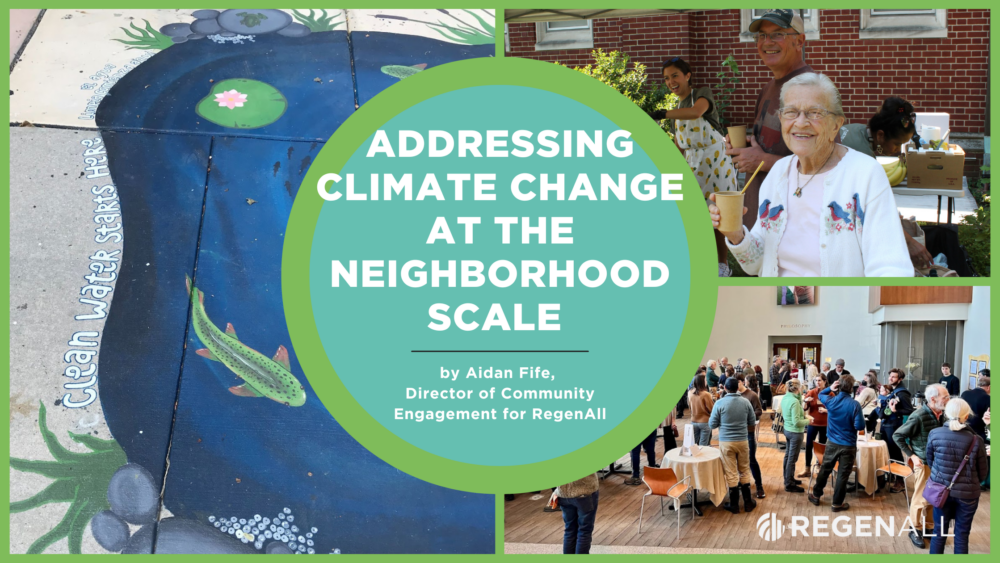by Aidan Fife, Director of Community Engagement for RegenAll
This article was originally published in Stroll Lane Magazine.
The inspiration for Melissa and Doug Snavely helping launch a Climate Action Neighborhood in College Park began with Hamilton Park—the first neighborhood to start a Climate Action Neighborhood (CAN). Attending their meetings, she was impressed by the blend of community and environmental action. “It was a perfect marriage of neighborhood, community, and doing something for the environment,” Melissa said. She felt College Park was ready for something similar.
While on a cross-country trip with her husband Doug, Melissa shared the idea of starting a climate initiative in their neighborhood. “I asked if he’d be interested in doing it with me. He said he was all in,” she recalls. Together, they helped launch the College Park CAN.
Climate Action Neighborhoods is a program of RegenAll. RegenAll provides a playbook to guide communities through the process of starting their own CANs and offers support through its non-profit status, allowing groups to apply for grants. Looking ahead, RegenAll plans to offer seed money and event support, such as home energy tours, to help new CANs get started.
A Lifelong Interest in Environmentalism
Melissa’s passion for environmentalism began when Pennsylvania first introduced recycling. “We were raised to take care of the planet,” she said. The birth of her granddaughter deepened her commitment to taking action. “We’ve really messed up our planet over the past 50 years, and kids today will have to change the world—but they shouldn’t have to do it on their own.”
For Melissa, the CAN also became a way to reconnect with her community after the pandemic. “Working remotely was isolating and COVID made it worse,” she explained. “The environmental aspect appealed to me, but so did bringing the neighborhood together.”
Launching the College Park Climate Action Neighborhood
The College Park CAN had an enthusiastic start, with a strong turnout at its first meeting. “At every event, we still worry if people will show up, but they always do,” Doug said. The group now has about 165 people on its newsletter, with a core of 15 to 20 actively participating.
Advice for Starting Your Own CAN
Melissa encourages anyone interested in starting a CAN to take the leap. “The environment needs help,” she said. With RegenAll’s playbook for guidance, she recommends starting small, gathering a core group of committed people, and being prepared for ups and downs. “Doug said it’s like throwing spaghetti at the wall and seeing what sticks,” she laughed. Shadowing other groups, as Melissa did with Hamilton Park, can also provide valuable insights.
Building Community through Climate Action
For the Snavelys, one of the best parts of starting a CAN has been connecting with their neighbors. “We’ve met remarkable people in our neighborhood,” Melissa said. “It’s exciting to see their strengths and get them involved.”
Their creative approach to meetings—offering ice cream or hosting a chili cook-off—has helped draw new faces and keep people engaged. The joy of building a stronger community while contributing to environmental action has been a rewarding experience that Melissa and Doug hope will inspire others to follow suit.



Comments are closed.